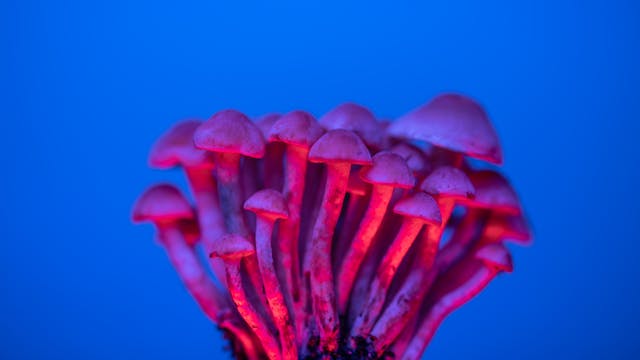Psilocybin, the psychoactive compound found in certain species of mushrooms, has been capturing the interest of researchers and the public alike due to its potential therapeutic benefits and mind-altering effects. It also doesn’t hurt that they make for the best mushroom choco bars ever. In this article, we’ll delve into the science behind psilocybin and explore how it works in the brain, shedding light on its fascinating mechanisms and potential applications.
What Is Psilocybin?
Psilocybin is a naturally occurring psychedelic compound found in over 180 species of mushrooms, commonly known as magic mushrooms or shrooms. When ingested, psilocybin is converted into psilocin in the body, which is the active form responsible for its hallucinogenic effects. These effects can include altered perception of time and space, changes in mood, and profound spiritual experiences.
The Serotonin Connection
One of the key mechanisms through which psilocybin exerts its effects is by interacting with the brain’s serotonin system. Serotonin is a neurotransmitter that plays a crucial role in regulating mood, cognition, and perception. Psilocybin binds to serotonin receptors, particularly the 5-HT2A receptor subtype, leading to alterations in neural activity and neurotransmitter release.
Neural Network Modulation
Psilocybin’s effects on serotonin receptors result in the modulation of neural networks in the brain. Specifically, it reduces the activity of the default mode network (DMN), which is associated with self-referential thoughts, mind-wandering, and the sense of ego. This reduction in DMN activity is thought to underlie the profound changes in consciousness experienced during a psilocybin trip, including feelings of interconnectedness, ego dissolution, and enhanced introspection.

Neuroplasticity and Connectivity
Research suggests that psilocybin may promote neuroplasticity, the brain’s ability to reorganize and form new neural connections. This is believed to occur through the stimulation of growth factors and the enhancement of synaptic plasticity, potentially leading to long-lasting changes in brain structure and function. These neuroplastic effects could be relevant for therapeutic applications, such as in the treatment of depression, anxiety, and addiction.
Therapeutic Potential
 The unique pharmacological properties of psilocybin have sparked interest in its therapeutic potential for various mental health conditions. Clinical studies have shown promising results in using psilocybin-assisted therapy for conditions like treatment-resistant depression, anxiety associated with terminal illness, PTSD, and substance use disorders. The profound emotional and mystical experiences induced by psilocybin are believed to facilitate therapeutic breakthroughs and promote psychological healing.
The unique pharmacological properties of psilocybin have sparked interest in its therapeutic potential for various mental health conditions. Clinical studies have shown promising results in using psilocybin-assisted therapy for conditions like treatment-resistant depression, anxiety associated with terminal illness, PTSD, and substance use disorders. The profound emotional and mystical experiences induced by psilocybin are believed to facilitate therapeutic breakthroughs and promote psychological healing.
In Conclusion
Understanding the science behind psilocybin offers insights into its profound effects on consciousness, mood, and perception. By interacting with serotonin receptors, modulating neural networks, promoting neuroplasticity, and demonstrating therapeutic potential, psilocybin opens doors to new avenues of research and treatment for mental health disorders. With continued scientific exploration and responsible use, psilocybin may offer valuable contributions to mental health care in the future.


